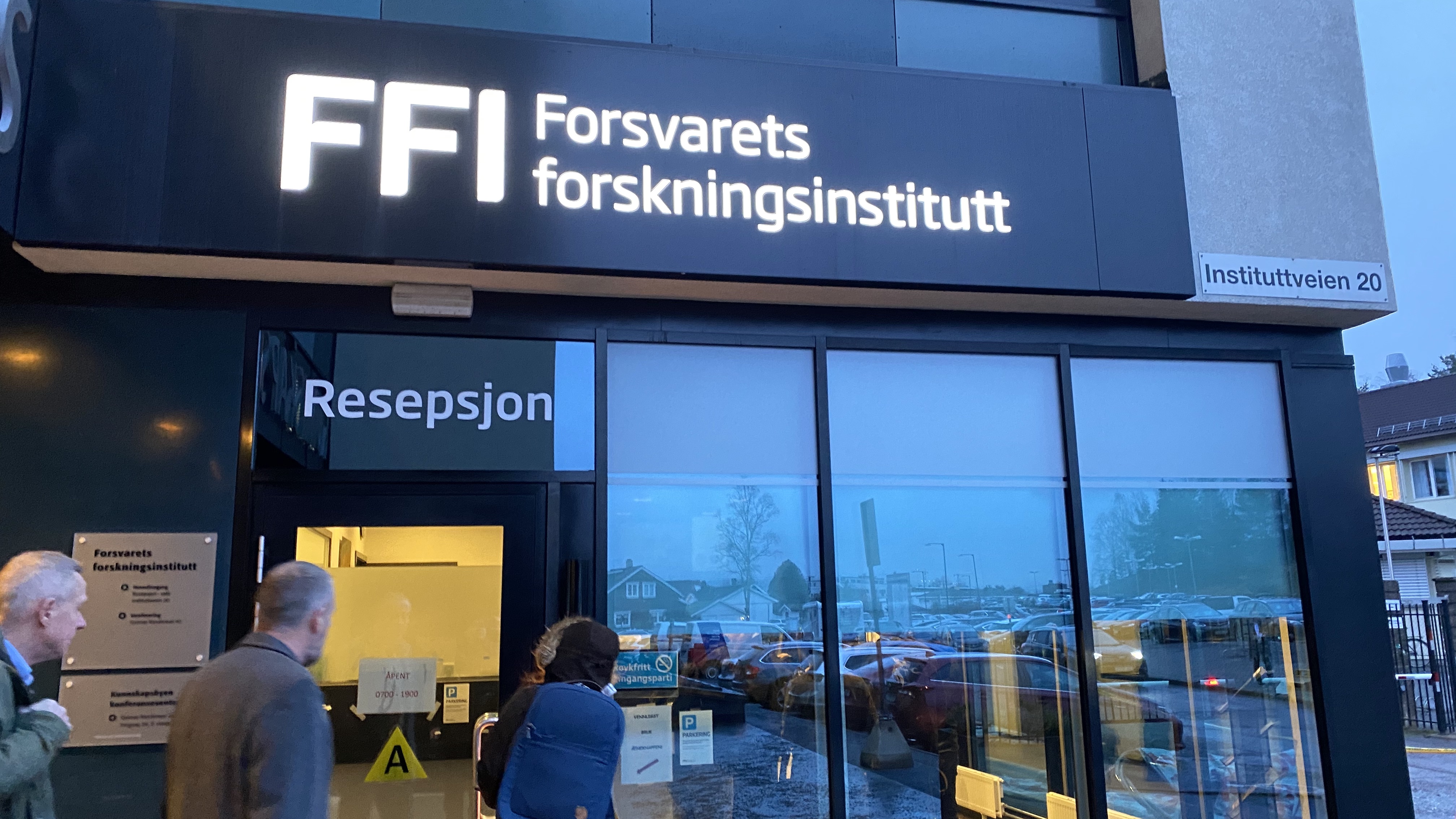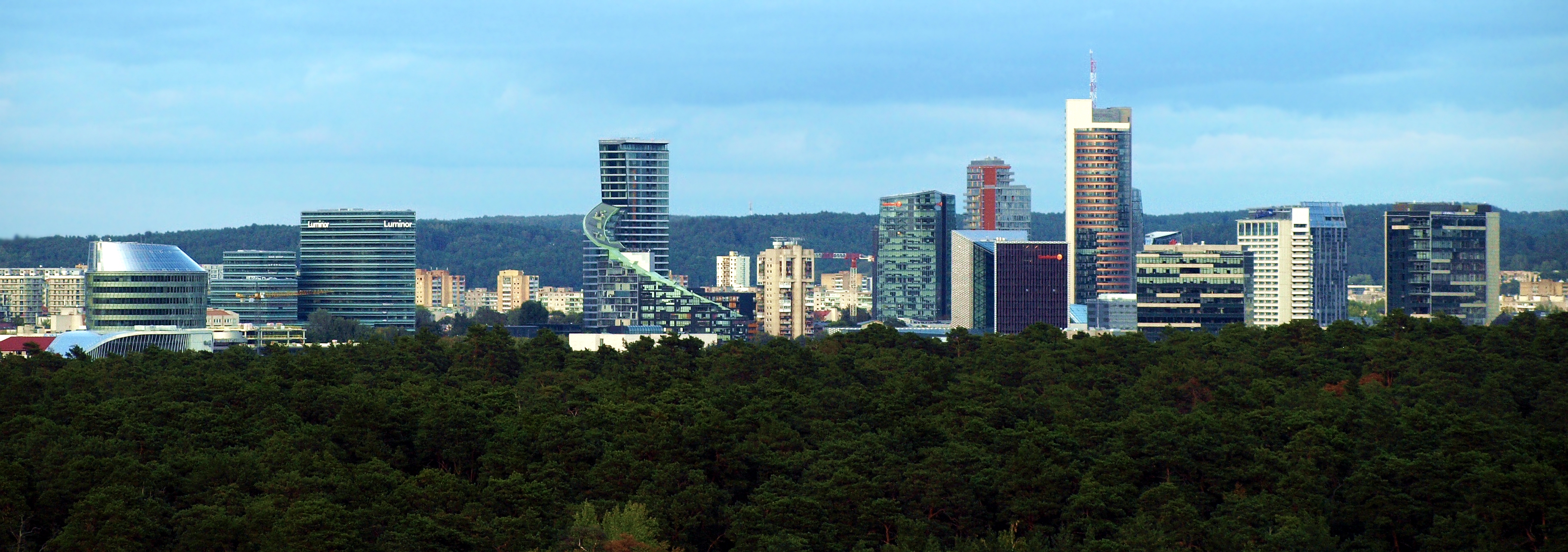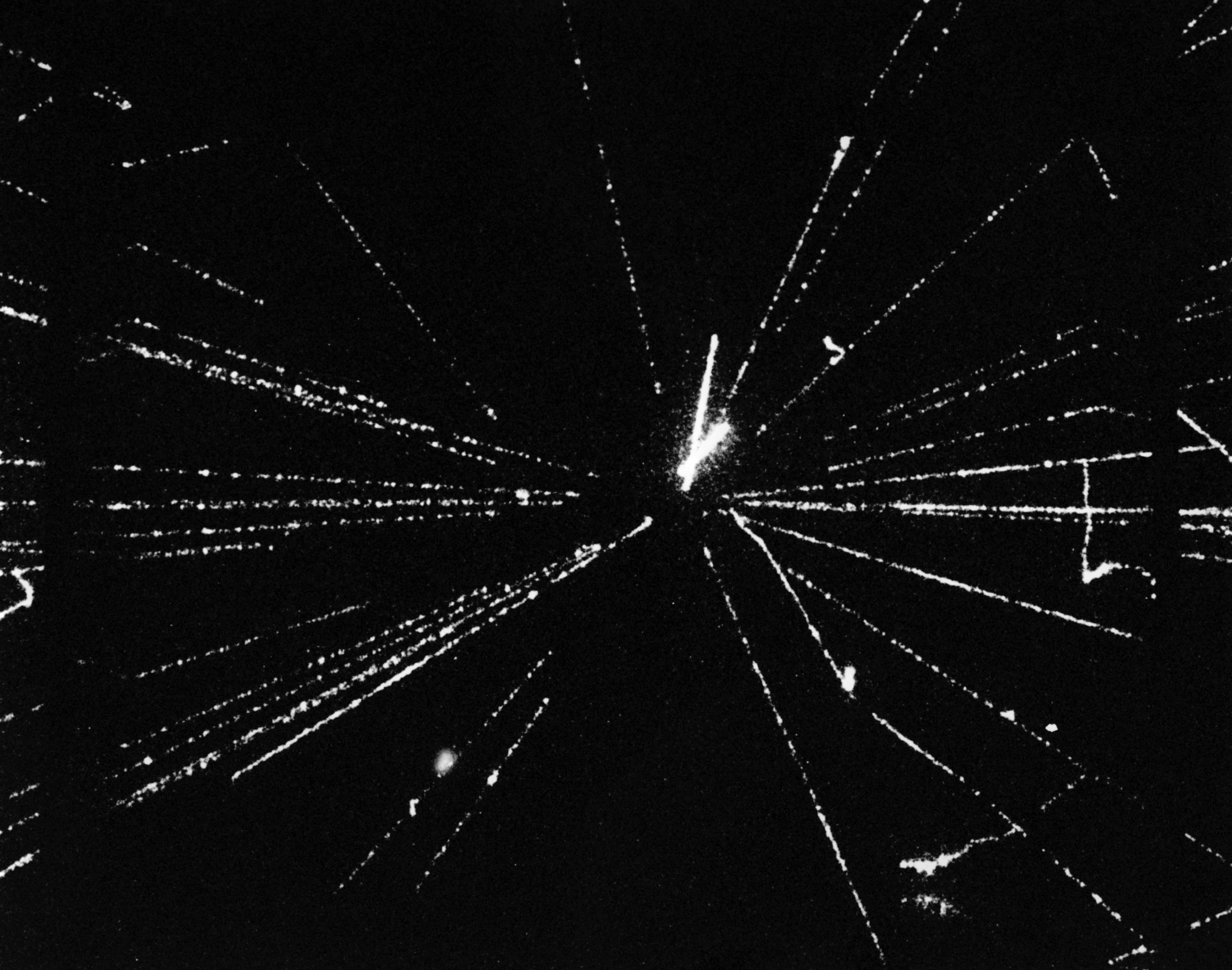|
Norsk Data
Norsk Data was a minicomputer manufacturer located in Oslo, Norway. Existing from 1967 to 1998, it had its most active period from the early 1970s to the late 1980s. At the company's peak in 1987, it was the second largest company in Norway and employed over 4,500 people. Throughout its history Norsk Data produced a long string of extremely innovative systems, with a disproportionately large number of world firsts. Some examples of this are the NORD-1, the first minicomputer to have memory paging as a standard option, and the first machine to have floating-point instructions standard, the NORD-5, the world's first 32-bit minicomputer (beating the VAX, often claimed the first, by 6 years). Historical overview The origins of Norsk Data go back to the development of digital computers at the Norwegian Defense Research Establishment at Kjeller, Norway, where several early computers had been designed, such as the SAM and the SAM 2, also known as the FLINK. The success of this ... [...More Info...] [...Related Items...] OR: [Wikipedia] [Google] [Baidu] |
Rolf Skår
Rolf Skår (13 May 1941 – 24 May 2023) was a Norwegian engineer and entrepreneur. He was a co-founder of the computer manufacturing company Norsk Data in 1967, and took over as chief executive officer (CEO) of the company from 1978 to 1989. He was later CEO of the Royal Norwegian Council for Scientific and Industrial Research, chaired the Norwegian Polytechnic Society, and was CEO of the Norwegian Space Centre from 1998 to 2006. For his contributions to information technology and space activity, Skår was knighted as in the First Class of the Order of St. Olav in 2010. Early life and education Born in Karmøy on 13 May 1941, Skår was the son of farmer and fisherman Lars Martin Skår and Magnhild Ytreland. In 1966, Skår graduated in cybernetics from the Norwegian Institute of Technology where he studied under Professor Jens Glad Balchen. During his studies he had several periods abroad. In the summer of 1963 he went to Switzerland to work for an electrical products manufactur ... [...More Info...] [...Related Items...] OR: [Wikipedia] [Google] [Baidu] |
Computer Hardware
Computer hardware includes the physical parts of a computer, such as the central processing unit (CPU), random-access memory (RAM), motherboard, computer data storage, graphics card, sound card, and computer case. It includes external devices such as a Computer monitor, monitor, Computer mouse, mouse, Computer keyboard, keyboard, and Computer speakers, speakers. By contrast, software is a set of written instructions that can be stored and run by hardware. Hardware derived its name from the fact it is ''Hardness, hard'' or rigid with respect to changes, whereas software is ''soft'' because it is easy to change. Hardware is typically directed by the software to execute any command or Instruction (computing), instruction. A combination of hardware and software forms a usable computing system, although Digital electronics, other systems exist with only hardware. History Early computing devices were more complicated than the ancient abacus date to the seventeenth century. French ... [...More Info...] [...Related Items...] OR: [Wikipedia] [Google] [Baidu] |
Kjeller
Kjeller is a village located near Lillestrøm in the municipality of Lillestrøm, Norway. It is located 25 kilometers north-east of Oslo. Name The Norse form of the name was probably ''Tjaldir''. This is then the plural of ''tjald'' n 'tent'. The hills around the farm (''Kjellerhaugen'' and others) might have been compared in form with tents. Facilities Kjeller contains: * Kjeller Airport *Norwegian Defence Logistic Organization (''FLO'') *The Norwegian Defence Research Establishment (''FFI'') *The Institute for Energy Technology (''IFE''), including one of Norway's two nuclear research reactors. * Norwegian Institute for Air Research *The Norwegian Standardisation Bureau * UNIK (University Graduate Center) *Oslo Metropolitan University * NORSAR (Norwegian Seismic Array) Historically, Kjeller has also been the location for a small aircraft factory. The Telenor Research Centre was located in Kjeller until 2001, when the majority of employees moved to Fornebu on 23 Novemb ... [...More Info...] [...Related Items...] OR: [Wikipedia] [Google] [Baidu] |
Vilnius
Vilnius ( , ) is the capital of and List of cities in Lithuania#Cities, largest city in Lithuania and the List of cities in the Baltic states by population, most-populous city in the Baltic states. The city's estimated January 2025 population was 607,667, and the Vilnius urban area (which extends beyond the city limits) has an estimated population of 747,864. Vilnius is notable for the architecture of its Vilnius Old Town, Old Town, considered one of Europe's largest and best-preserved old towns. The city was declared a World Heritage Site, UNESCO World Heritage Site in 1994. The architectural style known as Vilnian Baroque is named after the city, which is farthest to the east among Baroque architecture, Baroque cities and the largest such city north of the Alps. The city was noted for its #Demographics, multicultural population during the Polish–Lithuanian Commonwealth, with contemporary sources comparing it to Babylon. Before World War II and The Holocaust in Lithuania, th ... [...More Info...] [...Related Items...] OR: [Wikipedia] [Google] [Baidu] |
Lithuania
Lithuania, officially the Republic of Lithuania, is a country in the Baltic region of Europe. It is one of three Baltic states and lies on the eastern shore of the Baltic Sea, bordered by Latvia to the north, Belarus to the east and south, Poland to the south, and the Russian exclave, semi-exclave of Kaliningrad Oblast to the southwest, with a Maritime boundary, maritime border with Sweden to the west. Lithuania covers an area of , with a population of 2.89 million. Its capital and largest city is Vilnius; other major cities include Kaunas, Klaipėda, Šiauliai and Panevėžys. Lithuanians who are the titular nation and form the majority of the country's population, belong to the ethnolinguistic group of Balts and speak Lithuanian language, Lithuanian. For millennia, the southeastern shores of the Baltic Sea were inhabited by various Balts, Baltic tribes. In the 1230s, Lithuanian lands were united for the first time by Mindaugas, who formed the Kingdom of Lithuania on 6 July ... [...More Info...] [...Related Items...] OR: [Wikipedia] [Google] [Baidu] |
LITNET
LITNET is Lithuanian Research and Education Network in Lithuania. It was established in 1991 and had X.25 satellite connectivity to University of Oslo. LITNET NOC is located in Kaunas University of Technology The Kaunas University of Technology (abbreviated as KTU, ) is a public university, public research university located in Kaunas, Lithuania. Established in 1922, KTU has been seen as one of Lithuania's top science education centers. In 2021, KTU ... (KTU). References External links * Educational organizations based in Lithuania Internet in Lithuania National research and education networks {{Compu-network-stub ... [...More Info...] [...Related Items...] OR: [Wikipedia] [Google] [Baidu] |
January Events
The January Events () were a series of violent confrontations between the civilian population of Lithuania, supporting independence, and the Soviet Armed Forces. The events took place between 11 and 13 January 1991, after the Act of the Re-Establishment of the State of Lithuania, restoration of independence by Lithuania. As a result of the Soviet military actions, 14 civilians were killed and over 140 were injured as they peacefully protested for freedom in what is known as the Vilnius massacre. The 13th of January was the most violent day of the month in Lithuania and this was the bloodiest act of repression by Soviet forces since the April 9 tragedy. The events were primarily centered in the capital city Vilnius, but Soviet military activity and confrontations also occurred elsewhere in the country, including Alytus, Šiauliai, Varėna and Kaunas. January 13th is the Day of the Defenders of Freedom () in Lithuania and it is officially observed as a commemorative day. Backgrou ... [...More Info...] [...Related Items...] OR: [Wikipedia] [Google] [Baidu] |
Norsk Hydro
Norsk Hydro ASA (often referred to as just ''Hydro'') is a Norway, Norwegian aluminium and renewable energy company, headquartered in Oslo. It is one of the largest aluminium companies worldwide. It has operations in some 50 countries around the world and is active on all continents. The Government of Norway, Norwegian state owns 34.3% of the company through the Ministry of Trade and Industry (Norway), Ministry of Trade, Industry and Fisheries. A further 6.5% is owned by Folketrygdfond, which administers the Government Pension Fund of Norway. Norsk Hydro employs approximately 35,000 people. Eivind Kallevik has been the CEO since May, 2024, following Hilde Merete Aasheim. Rune Bjerke has been the Chairman since 2024 and Magnus Aakvaag (the grandson of former CEO Torvild Aakvaag) serves as a strategic advisor. Hydro had a significant presence in the petroleum, oil and natural gas, gas industry until October 2007, when these operations were merged with History of Statoil (1972� ... [...More Info...] [...Related Items...] OR: [Wikipedia] [Google] [Baidu] |
Data Center
A data center is a building, a dedicated space within a building, or a group of buildings used to house computer systems and associated components, such as telecommunications and storage systems. Since IT operations are crucial for business continuity, it generally includes redundant or backup components and infrastructure for power supply, data communication connections, environmental controls (e.g., air conditioning, fire suppression), and various security devices. A large data center is an industrial-scale operation using as much electricity as a medium town. Estimated global data center electricity consumption in 2022 was 240–340 TWh, or roughly 1–1.3% of global electricity demand. This excludes energy used for cryptocurrency mining, which was estimated to be around 110 TWh in 2022, or another 0.4% of global electricity demand. The IEA projects that data center electric use could double between 2022 and 2026. High demand for electricity from data centers, incl ... [...More Info...] [...Related Items...] OR: [Wikipedia] [Google] [Baidu] |
Municipality
A municipality is usually a single administrative division having municipal corporation, corporate status and powers of self-government or jurisdiction as granted by national and regional laws to which it is subordinate. The term ''municipality'' may also mean the governing body of a given municipality. A municipality is a general-purpose administrative subdivision, as opposed to a special district (United States), special-purpose district. The English language, English word is derived from French language, French , which in turn derives from the Latin language, Latin , based on the word for social contract (), referring originally to the Latin communities that supplied Rome with troops in exchange for their own incorporation into the Roman state (granting Roman citizenship to the inhabitants) while permitting the communities to retain their own local governments (a limited autonomy). A municipality can be any political jurisdiction (area), jurisdiction, from a sovereign state s ... [...More Info...] [...Related Items...] OR: [Wikipedia] [Google] [Baidu] |
Super Proton Synchrotron
The Super Proton Synchrotron (SPS) is a particle accelerator of the synchrotron type at CERN. It is housed in a circular tunnel, in circumference, straddling the border of France and Switzerland near Geneva, Switzerland. History The SPS was designed by a team led by John Adams (physicist), John Adams, List of Directors General of CERN, director-general of what was then known as Laboratory II. Originally specified as a 300 GeV accelerator, the SPS was actually built to be capable of 400 GeV, an operating energy it achieved on the official commissioning date of 17 June 1976. However, by that time, this energy had been exceeded by Fermilab, which reached an energy of 500 GeV on 14 May of that year. The SPS has been used to accelerate protons and antiprotons, electrons and positrons (for use as the injector for the Large Electron–Positron Collider (LEP)), and quark–gluon plasma, heavy ions. From 1981 to 1991, the SPS operated as a hadron (more precisely, proton–an ... [...More Info...] [...Related Items...] OR: [Wikipedia] [Google] [Baidu] |
Switzerland
Switzerland, officially the Swiss Confederation, is a landlocked country located in west-central Europe. It is bordered by Italy to the south, France to the west, Germany to the north, and Austria and Liechtenstein to the east. Switzerland is geographically divided among the Swiss Plateau, the Swiss Alps, Alps and the Jura Mountains, Jura; the Alps occupy the greater part of the territory, whereas most of the country's Demographics of Switzerland, 9 million people are concentrated on the plateau, which hosts List of cities in Switzerland, its largest cities and economic centres, including Zurich, Geneva, and Lausanne. Switzerland is a federal republic composed of Cantons of Switzerland, 26 cantons, with federal authorities based in Bern. It has four main linguistic and cultural regions: German, French, Italian and Romansh language, Romansh. Although most Swiss are German-speaking, national identity is fairly cohesive, being rooted in a common historical background, shared ... [...More Info...] [...Related Items...] OR: [Wikipedia] [Google] [Baidu] |







